RoxiApp is a type of rogue software, similar to YuuvApp and KcozApp, that doesn’t damage your system of files, but instead generates obstructive advertisements that can link you to unsafe sites or even expose you to online scams.
Most users get this software added to their systems after installing some other software, downloaded from an unreliable source. The most common example is when people download pirated games from sites like Steamunlocked.
However, RoxiApp can sometimes be bundled with safe apps, such as Cemu, MuMu, Noxplayer, and other console game emulators. It can also be found in game mods for titles such as Minecraft or Roblox.
Last, but not least, a file named __app__x64__v.1.4.7.msi can also be responsible for installing this malware.
All in all, there are many vectors of distribution for this rogue app, so you must be careful even when you are installing software that’s legitimate.
As for removing RoxiApp in case you already have it on your PC, I’ve prepared a detailed tutorial on how to get rid of this unwanted application. You’ll find the removal steps below.
RoxiApp Removal Guide
RoxiApp will rarely let itself be removed easily. Adware apps like it are persistent and are designed in a way that lets them remain in the system for as long as possible. But sometimes, you may get lucky and be able to delete such an app in the traditional way. This is much quicker and a lot more convenient, so why not give it a try:
- Begin by removing suspicious programs. Open “Apps & Features” through the Start Menu (search for it there).
- Sort apps by their installation date. Look closely at anything installed around the time RoxiApp appeared.
- If you see RoxiApp there, click it, click Uninstall, and complete the prompts to remove the app.
- Look for anything else that seems unfamiliar or suspicious and get rid of it too.
- If you know where RoxiApp and any other apps you deleted were installed, go to those locations and if their folders are still there, delete them.
In some cases, this might be enough, but adware like RoxiApp usually doesn’t go away so easily. Not to worry, though. The advanced steps below will let you get rid of it and any additional rogue software that may have entered your system alongside that adware.
SUMMARY:
Important! Read Before Continuing
The next removal guide will take some time to complete (30-60 minutes) and requires you to have at least some basic technical experience. If you don’t have the time or confidence to perform the next steps, there’s an alternative method:
You can use SpyHunter – a powerful removal tool that’s also super intuitive to use. It will make quick work of RoxiApp and any other rogue software that’s inside your system, so we recommend using it as an alternative to the manual steps.
How to Get Rid of RoxiApp: Advanced Removal
If the quick removal steps didn’t work and you are sure you want to do things manually, this is the guide you’ll need to get rid of RoxiApp.
But before you begin the removal itself, there are two things you must prepare:
First, the free LockHunter tool plays a crucial role in some of the following steps. You’ll need it to deal with RoxiApp’s locked files that you can’t delete normally.
Download Lock Hunter and set it up before you move forward. We know many users prefer not to resort to third-party software, but in this case, you will need to download this small utility.
The other preparatory step is to make the hidden files and folders on your PC visible.
Start by opening “Folder Options” after typing it in the Start Menu. Select “Show hidden files, folders, and drives” in the View section, then click Apply and OK. Hidden files will now appear and will look semi-transparent.
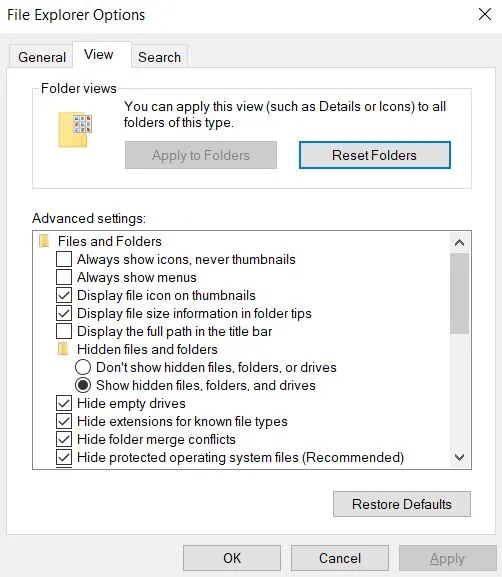
With this out of the way, you can now proceed with the actual removal.
Delete RoxiApp Virus Files and Folders
Now that hidden files are visible, you must look for the RoxiApp folder.
Navigate to C:\Users\YourUsername\AppData\Roaming. Check for a folder labeled Yusiq Axo S RoxiApp or something similar and if you find it, delete it.
Also be on the lookout for any files named __app__x64__v.1.4.7.msi or something similar. This could also be related to the RoxiApp malware.
Sometimes, the deletion will be blocked by RoxiApp – that’s why you need LockHunter. If you’ve already installed the tool, right-click the folder and choose “What’s locking this folder?”. In the new window that opens, just click the Delete option and the folder will be gone.
Next, you must purge the Temp folder as it could hold traces of RoxiApp.
Open the Start Menu and type “%Temp%”. Hit Enter.
Delete all the files in the Temp folder. It’s okay to delete everything in that folder, so it’s much easier to do that instead of searching for individual rogue files.

As a bonus effect, purging the Temp folder might clear up some space on your PC.
Remember to use LockHunter for any other files or folders that you are unable to delete.
Remove RoxiApp Virus Tasks From the Task Scheduler
RoxiApp might reinstall itself through scheduled tasks even if you delete everything else linked to the malware. Therefore, you cannot miss this step:
Search for and open the Task Scheduler through the Start Menu.
Inspect the tasks listed under the Task Scheduler Library (the folder in the top-left).
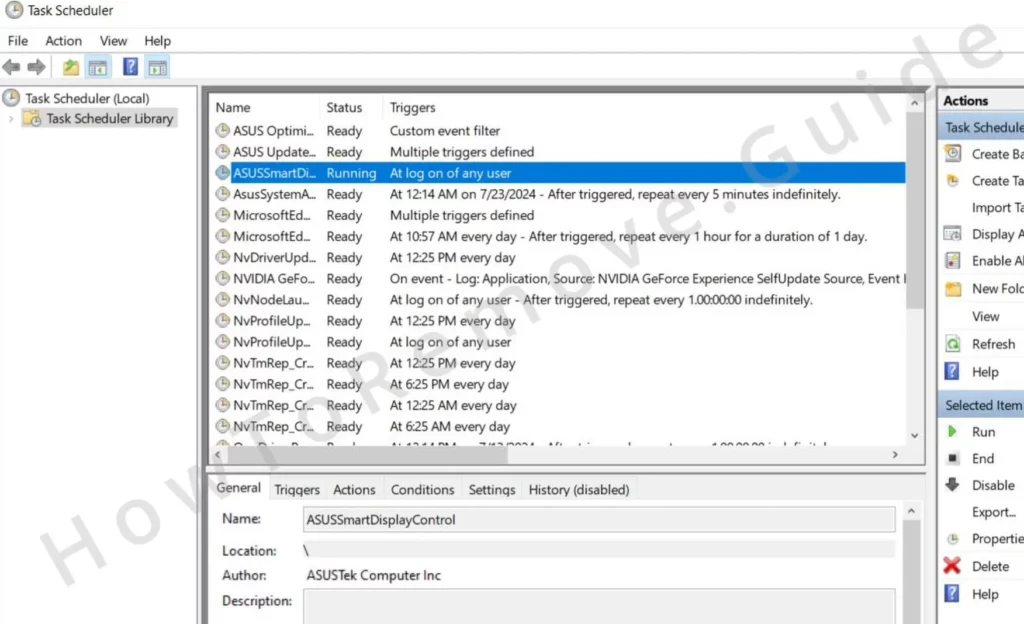
Double-click each task and check the “Actions” tab. Does it point to a location in AppData or Roaming or does it run some kind of strange script or suspicious .exe file? If yes, delete the task.
Make sure to check all tasks listed in the Task Scheduler. They shouldn’t be that many, exploring them all shouldn’t take too much time.

Delete RoxiApp Registry Items
The Windows Registry houses important system files but it might also hold malware remnants. Cleaning the registry demands care. One wrong deletion could cause issues.
Open the Registry Editor by typing “regedit” into the Start Menu. Right-click it and run it as Administrator.
Use Ctrl + F to search for “RoxiApp”. Delete every related entry. After each deletion, search again to ensure you haven’t missed any.
Then also manually look for the following registry keys in the left panel and if you find any of those, delete them:
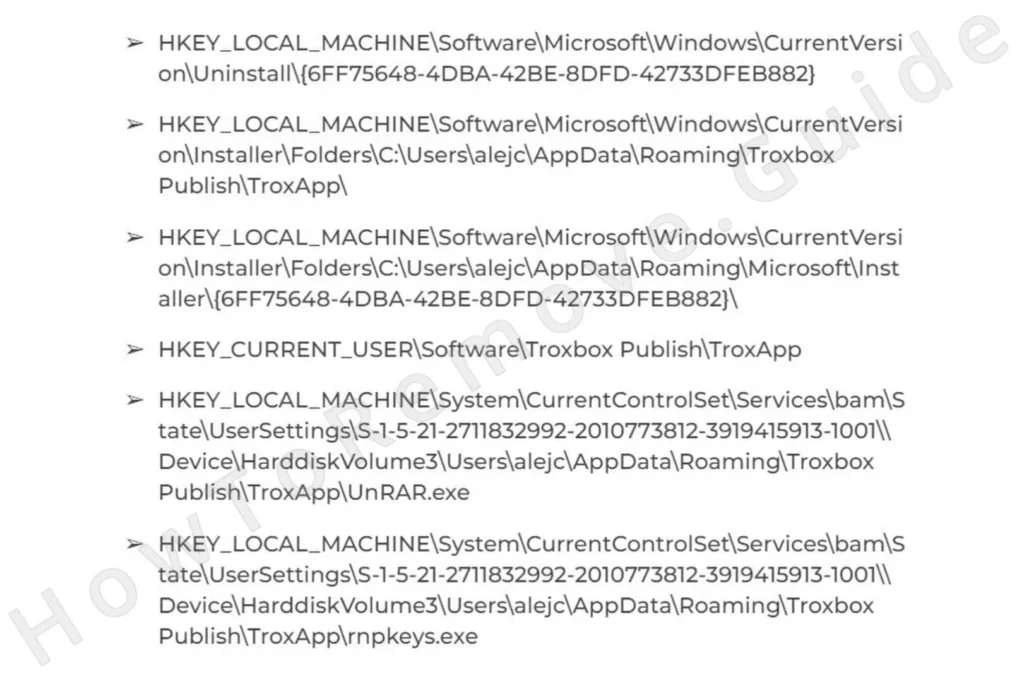
Be careful. You don’t want to delete important system keys. If you’re unsure, SpyHunter can handle this for you. No need to risk damaging the system by removing the wrong entry.
Remove the RoxiApp Malware From Your Browser
It’s possible that RoxiApp has introduced a rogue policy into your browser that keeps the browser under its control. If that’s the case, you’ll see a “Managed by your organization” message in the browser menu and at the top of its settings page. You must get rid of that policy, so here’s how:
Use the Start Menu to search for the Group Policy Editor and open it. Go to Computer Configuration > Administrative Templates and right-click the latter.
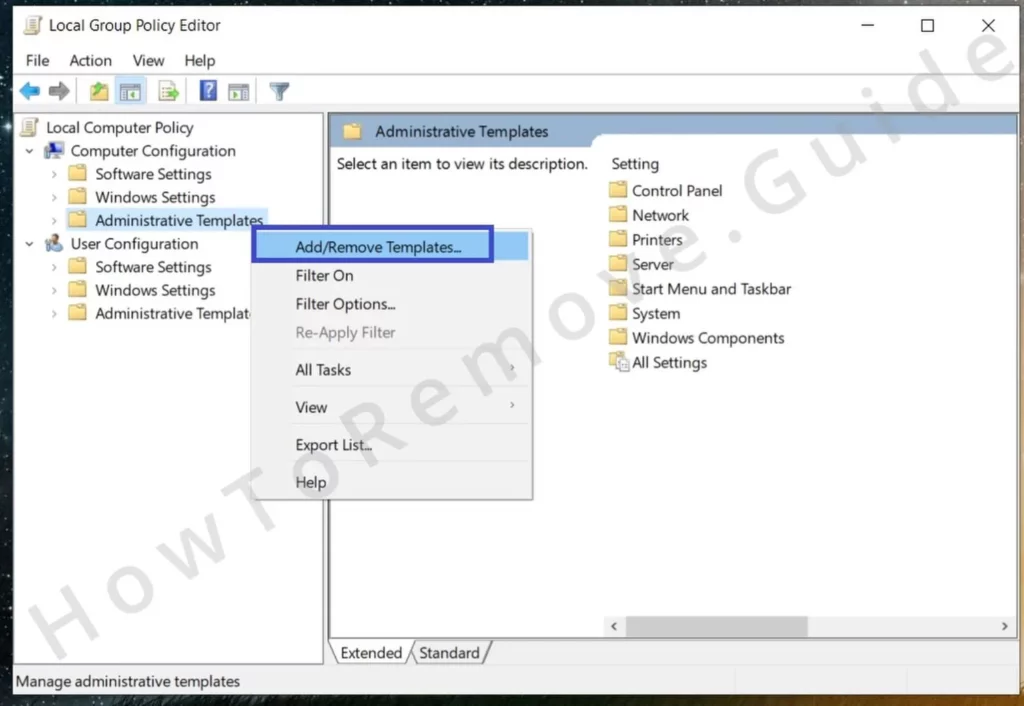
Then click the Add/Remove button and remove anything not added by you.
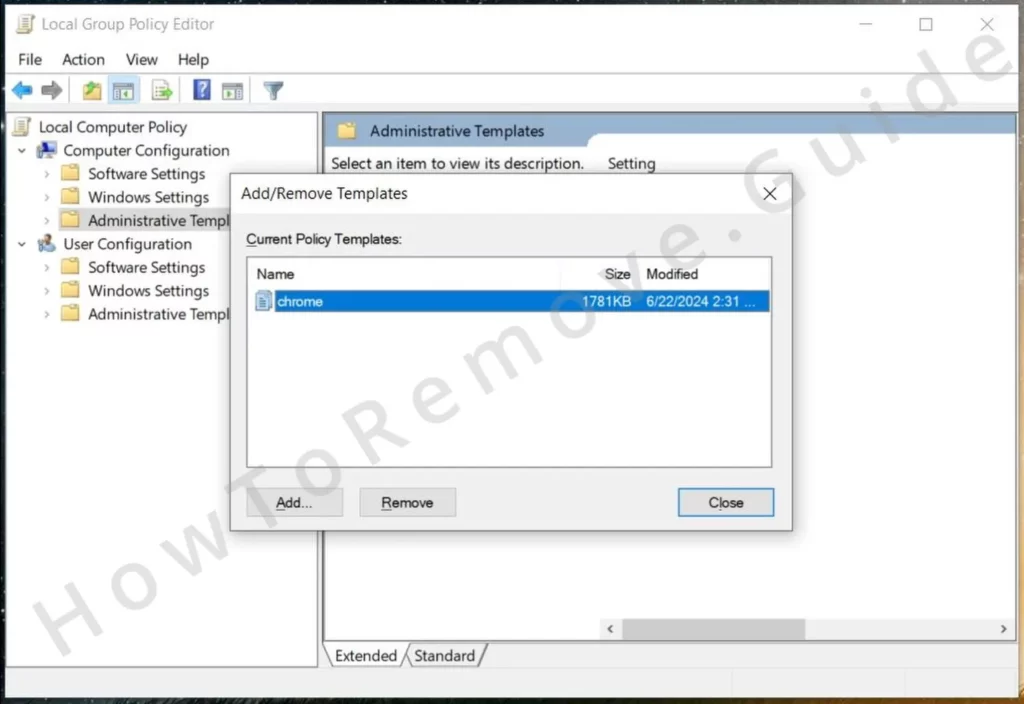
In case you are using Chrome and it has been taken over by a rogue adware policy, there’s an alternative way to clean it:
Download the Chrome Policy Remover – it’s totally free and doesn’t even require installation.
Right-click it, run it as Administrator, and if Windows triggers a security warning, just click More Info > Run Anyway to open it. Don’t worry. It’s safe.
Once the tool launches, it will run an automatic script that will clean all policies from Chrome and restore your control over the browser.
How to Uninstall RoxiApp
RoxiApp might have made additional changes. You need to clear them.
Click your browser’s main menu and go to its Settings page.
First, go to Extensions and uninstall anything unfamiliar. Extensions often provide a backdoor for malware to reinstall itself. Remove all suspicious extensions.
Then go to Privacy and Security > Delete browsing data. Choose a timeframe that extends to a moment before the malware appeared and clean everything except your passwords. Everything else should go.
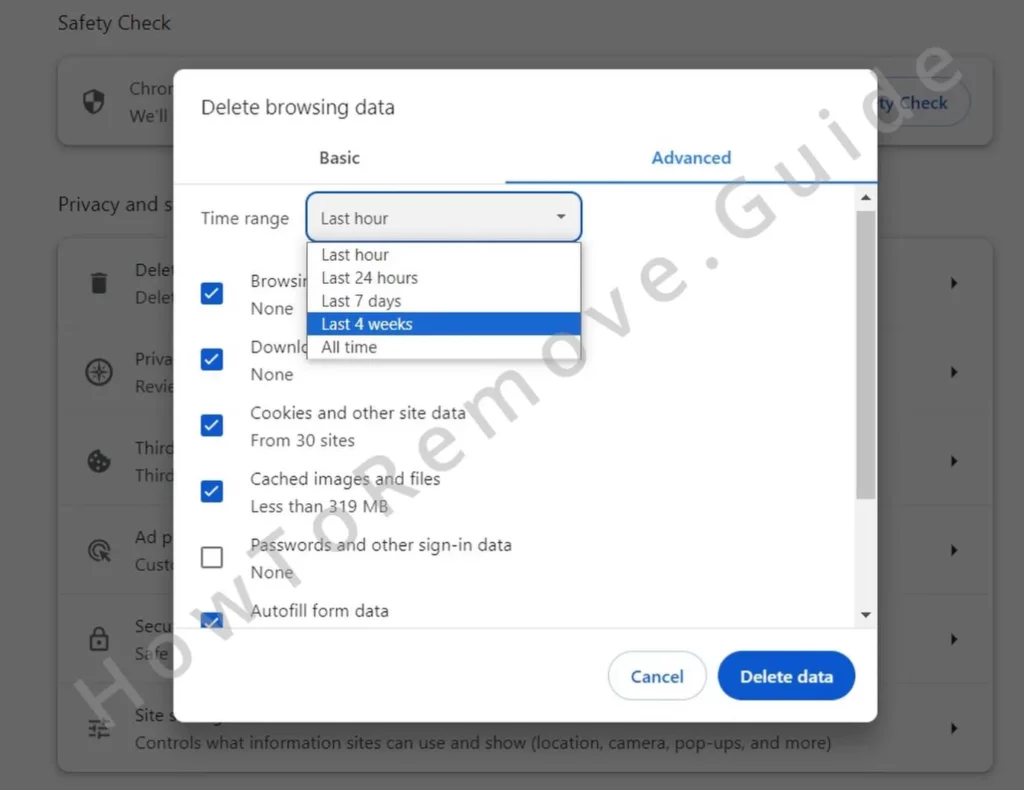
Open Site settings next (still in the Privacy and Security tab). Review all permissions. Remove any suspicious URLs shown under Allow.
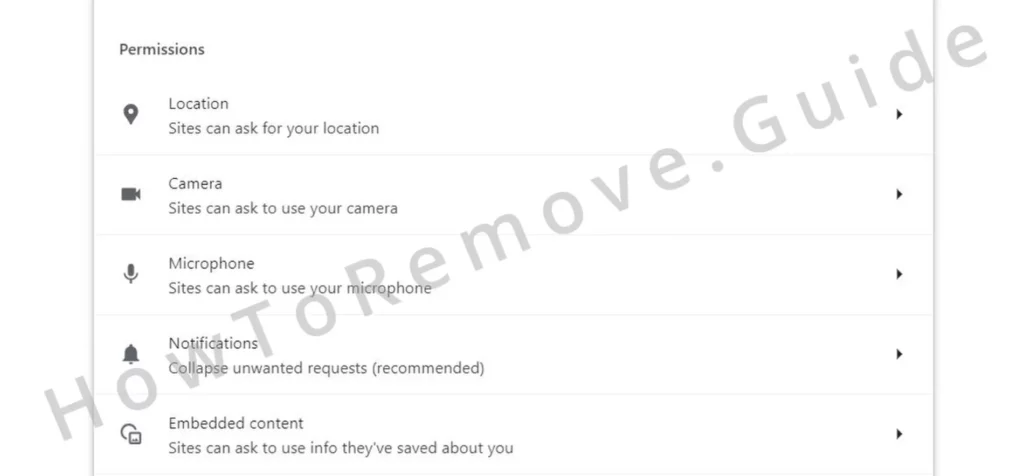
Next, check the Search Engines tab. Make sure your default search engine is something trusted – Google or Bing are good options.

Then click on Manage Search Engines and review all search engines listed. Delete any that seem suspicious.
Next, visit the On Startup section. Check for any URLs you didn’t add. Remove them. Then do the same in the Appearance tab.
At this point, your browser should be malware-free. RoxiApp won’t be able to push unwanted ads or control your browsing experience anymore.
Final Thoughts
You’ve worked through the steps to remove RoxiApp. It takes time and patience. By following this guide, you’ve eliminated malware from your system.
But remember, if at any point the process feels overwhelming, or the malware persists despite your efforts, professional tools like SpyHunter can step in.
Specialized tools scan deeper and remove anything you may have missed. Sometimes, that extra assistance saves you time and frustration. In the end, the goal is a clean, malware-free system. One way or another, you’ll get there.

Leave a Reply